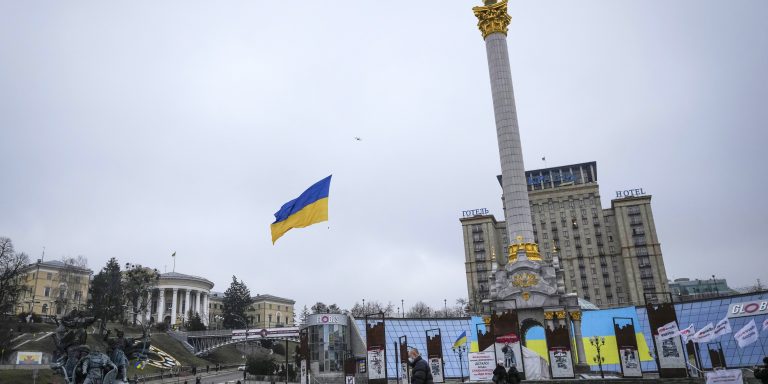INTELBRIEF
March 14, 2022
IntelBrief: What Could Happen If Ukraine Devolves into an Insurgency?

Bottom Line Up Front
- Most analysts believe that unless a ceasefire and subsequent peace deal are reached soon, Russia’s war in Ukraine will devolve into a long and bloody insurgency.
- If the conflict does transition to an insurgency, Ukraine is well-positioned to fight, given its knowledge of the home terrain, outpouring of popular support, and pipeline of assistance from Western countries delivering sophisticated weapons.
- CIA paramilitary units and elements of SOCEUR can be force multipliers to the Ukrainian insurgency without ever having to step foot on Ukrainian soil, instead operating from Poland or other NATO countries in Eastern Europe.
- There are also concerns that, should a full-blown insurgency develop and then drag on, Russia could deploy covert operatives to commit terrorist attacks on European soil.
As the Russian military continues its advance on Ukraine’s capital city, Kyiv, Ukraine’s military and legions of volunteer fighters are falling back in defensive positions. Russian troops have laid siege to various cities in Ukraine, shelling civilian targets and conducting indiscriminate bombings with no concern for collateral damage or sites protected under international humanitarian law. However, Ukrainians have fought back valiantly and few believe this conflict will end anytime soon. On the contrary, most analysts believe that unless a ceasefire and subsequent peace deal are reached soon, the conflict will devolve into a long and bloody insurgency. Given the ferocity with which the Ukrainians have been fighting, it is clear that the population will not accept a puppet government installed by the Kremlin.
If the conflict does reach a stalemate and transition to an insurgency, Ukraine is well-positioned to fight, given its knowledge of the home terrain, outpouring of popular support, and pipeline of assistance from Western and NATO countries delivering sophisticated anti-tank and other weapons. It is crucial that Western nations continue to flood weaponry into Ukraine, including surface-to-air missile systems, unmanned aerial systems (UAS), and electronic warfare (EW) and cyber defense systems, as well as artillery, small arms, ammunition, and any other materiel the Ukrainians need to counter their adversaries. Historically, the provision of tangible support, including weapons, logistics, intelligence, surveillance, and reconnaissance (ISR), have been major advantages to insurgents. In the Ukraine conflict, this support would be world class, supplied by some of the most advanced militaries globally. However, statements by the West stressing the intention to defend NATO territories but not engage in combat in Ukraine must be accompanied by clearer statements of consequences for Russia’s commission of war crimes and in the event of the use of chemical weapons.
Because Ukraine borders Poland, a NATO country, having a safe haven from which to establish supply lines and lines of communication is a massive advantage and one certain to frustrate the Russians. Central Intelligence Agency (CIA) paramilitary units and elements of Special Operations Command Europe (SOCEUR) can be force multipliers to the Ukrainian insurgency without ever having to step foot on Ukrainian soil, instead operating out of Poland or other NATO countries in Eastern Europe. Continued support to Ukrainian information operations would be essential, while shutting down Russia’s ability to operate in the information environment could also have an outsized impact against the Kremlin. The Russian military has already suffered significant casualties according to most credible estimates, with conservative estimates suggesting 6,000 troops. Morale is incredibly low, as most soldiers were not even informed that they would be going to war but seem to have been told they were deploying for military exercises. Ukrainians have ambushed Russian tank columns with javelins, while Bayraktar TB2 Turkish-made drones have stalked Russian convoys from the sky.
Foreign fighters and volunteers from abroad will complicate the situation, especially if, as the insurgency drags on, there are prisoner of war scenarios or atrocities committed by foreigners and the units they fight for. Moreover, Russian mercenaries—including the Wagner Group, but also potentially fighters from the Middle East and Africa that Putin is allegedly recruiting—will make an already complex conflict even more convoluted. Some within the U.S. government are growing concerned that Russia may attempt to use chemical weapons or stage a false flag incident at a Ukrainian nuclear plant. Over time, especially as conflicts grow even more severe, the anarchy could attract violent non-state actors and other extremists. Although unlikely, it is not impossible to think that anti-Russian jihadists from the Middle East, Caucasus, or Central Asia could see this as an opportunity to kill Russian soldiers. There are also concerns that, should a full-blown insurgency develop and drag on, Russia could deploy covert operatives to commit terrorist attacks on European soil, bringing the fight directly into the heart of NATO. Russia has already displayed a brazen and cavalier approach to killing dissidents in the United Kingdom and Germany, including by using chemical weapons like Novichok, and its conduct in Ukraine thus far—as in Syria—indicates no regard for protecting civilian lives or infrastructure.